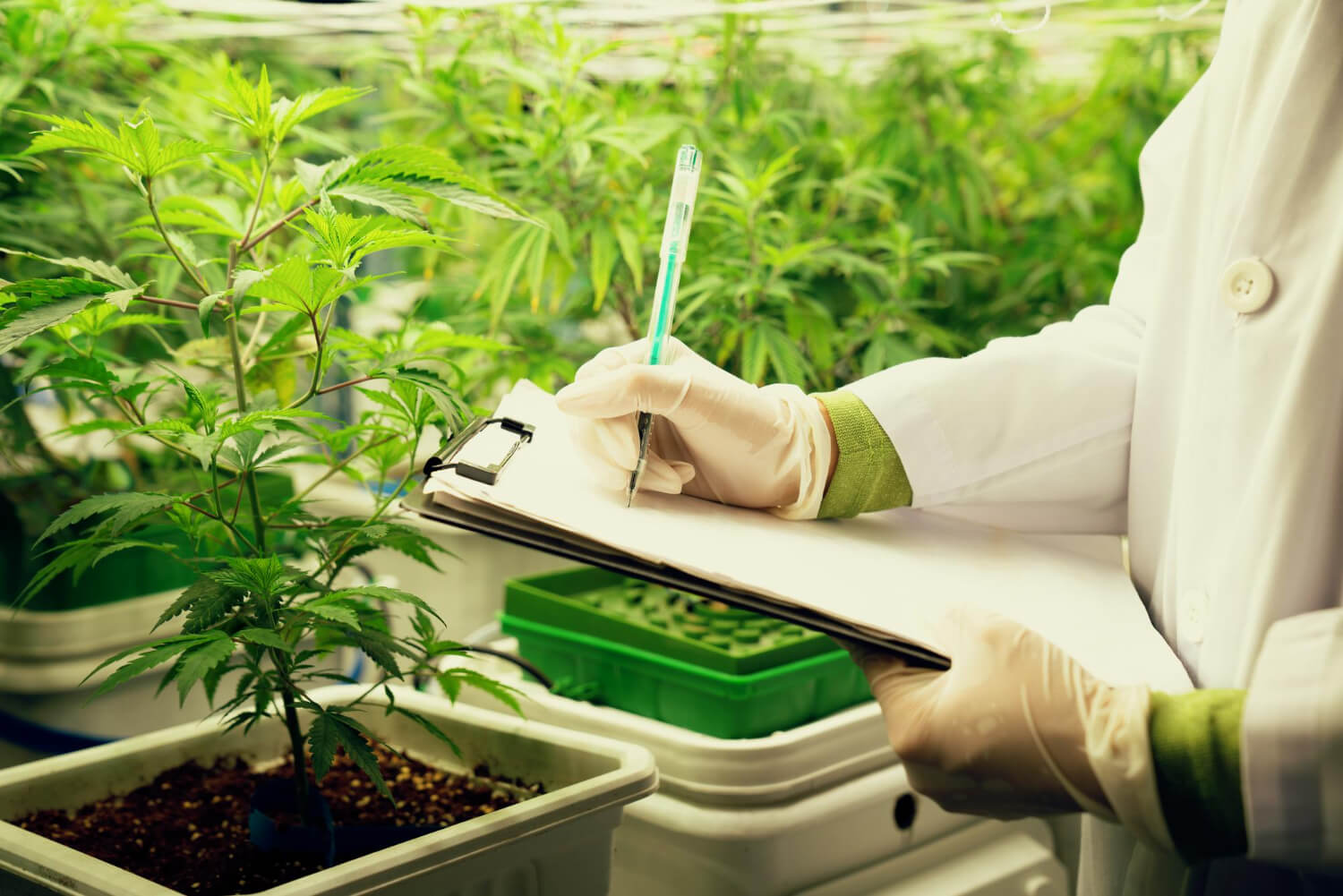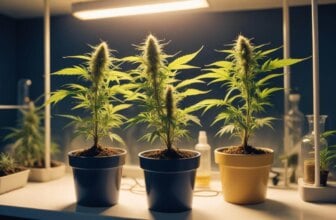When it comes to growing cannabis, you have three main growing styles to select from: soil, soilless, and hydroponics. Technically, a soilless media like coco coir is considered hydroponics, but today, we are focusing on the classic hydroponic setups, such as setups that have the roots always in contact with the water. Hydroponic cannabis cultivation is one of the best ways to grow cannabis, whether you’re a beginner or an experienced gardener, so let’s get to it!
Hydroponics in Cannabis Cultivation
Controlled nutrient delivery, faster growth cycles, fewer bugs, fewer weeds (except for the good kind), and reduced water consumption. There is little to not love about growing cannabis hydroponically.
Let’s address the elephant in the room; what truly is hydroponics? The term hydroponics covers many mediums, from aeroponics that spray the roots with water to growing in that potting soil you picked up at the gardening center — yes, despite it being labeled as soil, it’s most likely not.
Today, the broad definition of hydroponics is: a method of growing plants without soil. This allows it to include growing in soilless mediums such as coco coir or peat.
A more precise definition of hydroponics is: a method of growing plants with their roots in a water-heavy system with little to no buffer between the roots and water.
I personally like the redefined definition, because I find soilless to be a fairly even mix between soil and what I call “classic hydroponics”. Though, I’ll admit it’s not the best as you’re about to see. But it does align with the definition when the term was first coined by American scientist Dr. William Gericke in 1937, who described hydroponics as “methods of growing plants in liquid media for commercial purposes”. As well, hydroponic translates to waterworking (hydro = water and pontic (ponus) = labor).
To better understand what I mean by “classic hydroponics”, let’s look at the classic hydroponic systems.
Types of Hydroponic Systems for Cannabis
Perhaps the biggest way hydroponic setups separates itself from soilless and soil growing are these mediums’ reliance on a water reservoir that usually includes pumps to oxygenate the water.
Wick System
A classic hydroponic system often implored in classrooms to teach kids about growing plants, the wick system is one of the oldest and simplest methods. By connecting a soilless medium to a water reservoir with soft fabric strings, water and nutrients can passively move from the reservoir to the plant’s roots.
I know what you’re thinking, “this doesn’t fit your more precise definition of hydroponics!” And I agree, welcome to the world of gardening where definitions run loose and wild. Regardless, while a simple way to grow plants, there are better options.
Deep Water Culture (DWC)
This is the system that many, including myself, think of when we hear the term “hydroponics”. In a deep water culture system, the plants’ roots directly sit in their water reservoir. To make sure the plants don’t sink into the reservoir, they are supported by nets or pots to keep them in place — hydroton balls are often used to further help support while also blocking light from the roots and water.
DWC is a great hydroponic medium to start with, but you do need to be diligent about keeping the temperature down while keeping light from penetrating the reservoir as algae growth plagues these systems. But being able to see your plants’ roots when needed is amazing, especially for those new to cannabis cultivation.
Ebb and Flow
In school, you may have learned how ancient Egyptians relied on the Nile River flooding to bring new nutrients into their land for growing crops. If so, you’re already familiar with Ebb and Flow.
In Ebb and Flow, the nutrient solution periodically floods a grow tray where the plants are situated (often they are in their own containers filled with an inert substrate). This flooding is followed by a draining phase, allowing the roots better access to both nutrients and oxygen. This system is my recommendation when you’re looking to grow multiple cannabis plants at a time.
Nutrient Film Technique (NFT)
You can think of this system as a combination of DWC and Ebb and Flow. Like DWC, the roots are always in contact with water. But like Ebb and Flow, the water moves in a circular pattern, moving from a reservoir to a tray that houses the plants.
This method is great for plants with shallow roots (herbs, lettuce, etc.), and while it can work great for growing cannabis, by design, this system can get too big too fast and works best when growing dozens of plants in a commercial setting.
Best Practices for Hydroponic Cannabis Cultivation
Without a doubt, hydroponics gives you more control over your plants and their medium vs. a soil or even soilless medium. But therein lies the problem; while you can be more precise and fix nutrient issues faster, you can mess them up easier.
Unlike growing outside, you can’t just stick a seed in the ground and hope for the best. Hydroponics requires pumps that keep the water oxygenated, and accurate meters to maintain pH while delivering a precise EC of nutrients. You need to periodically clean and disinfect your hydroponic setup, remove any leaves that touch the water, and ensure the reservoirs don’t get too hot or allow light to enter.
In a hydroponic setup, there is little to no buffer between the water and roots. So try not to cut corners or cheap out. Thankfully, a well-put-together hydro setup will deliver faster growth and potentially bigger yields, paying for itself in the long run.
Selecting the Right Cannabis Strains for Hydroponics
While it’s pretty easy to grow any cultivator of cannabis hydroponically, some strains are better studied for hydro than others. When growing indoors hydroponically, indicas are nice due to their short and dense structure.
Additionally, look for strains that aren’t sensitive to pH fluctuations as they will happen more than they will in soil. High-water environments also tend to be breeding grounds for mold and fungi, so look for disease and mold-resistant strains. All of this means going with strains with proven genetics.
Great hydroponic strains include GG4, Purple Queen, Bubba Kush, White Widow, and Northern Lights.
Troubleshooting Common Hydroponic Issues
Monitoring and adjustments are so crucial when it comes to growing cannabis hydroponically. Thankfully, these systems are usually easier to automate.
Nutrient Management and pH Fluctuations
Nutrient management is key as over-fertilization and deficiencies are easier to achieve. However, with the proper knowledge and tools, you can diagnose and correct them much easier.
Nutrient and pH management in hydro is a combination of three things: water level, EC/PPM, and pH. For example, if the water level and pH stay the same, but EC falls, your plants are eating but not drinking and either need their EC lowered or the reservoir changed.
There are about 20 combinations of these three factors, but charts are freely available on the internet to guide you.
System Leaks and Failures
Hydroponic systems can experience leaks, pump failures, etc., that can disrupt the nutrient delivery and compromise plant health. While I’m a big fan of automated hydro systems, they have to have the ability to warn about equipment failures. Phones apps, thankfully, make it very easy to monitor and make quick adjustments.
Regular Cleaning
Salt buildups and algae growth are common issues seen in hydro setups, but regularly cleaning where you completely switch out the water will go far in preventing them.
Final Thoughts
Do you hate the guessing games as to whether you’re feeding too much or not enough, want to eliminate factors like microbes and cation exchange capacity (CEC) that are hard to control, or do you want bigger yields faster? If you answered yes to any of these, then you should absolutely consider hydroponics.
If you’re only familiar with soil growing and unsure if hydroponics is right for you, consider trying a soilless container grow that uses coco coir as its main medium. You can push various water rates/amounts through this style of system, and the more you water, the more “classic” hydroponics it becomes. Another great idea is first trying your hand at growing some herbs hydroponically. Remember, similar to an expensive but highly efficient light fixture, an expensive hydroponic system can pay for itself just as well, if not better, than a cheaper one.





